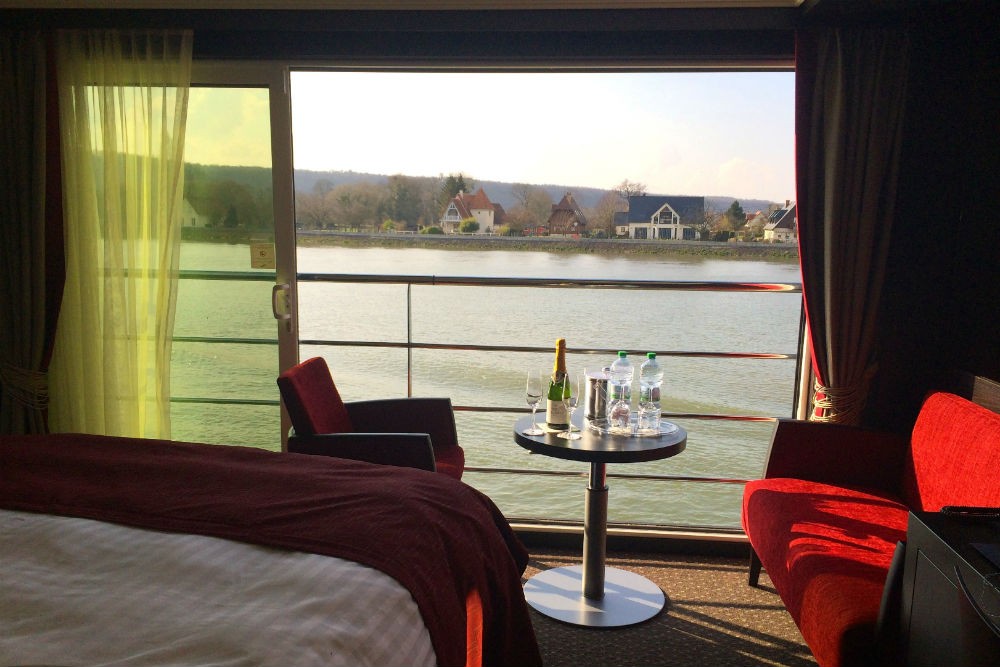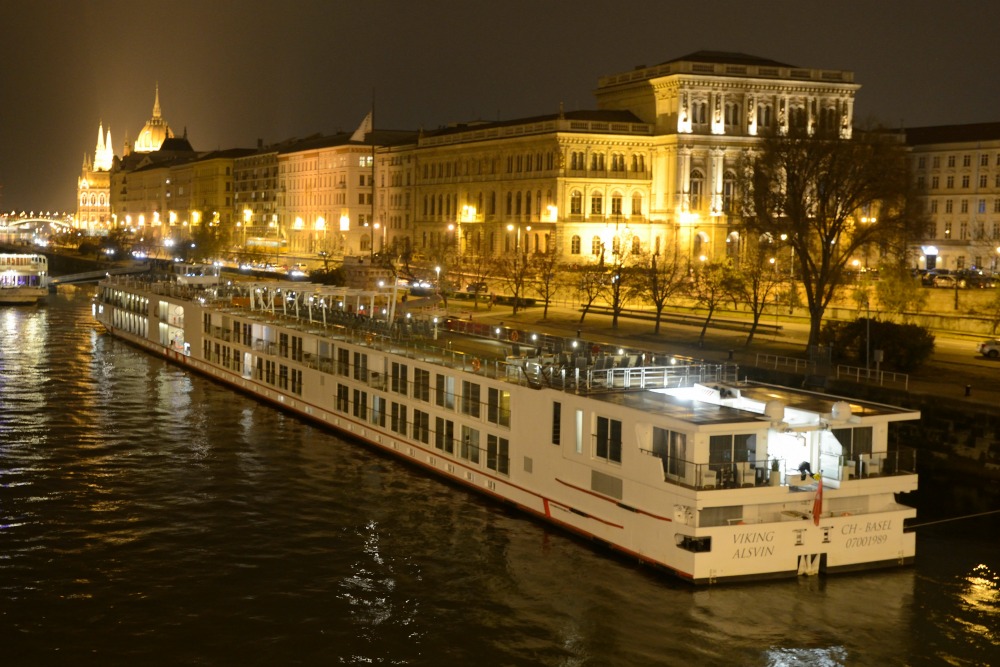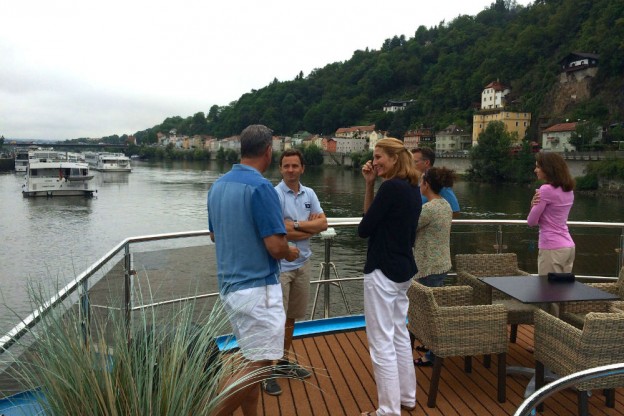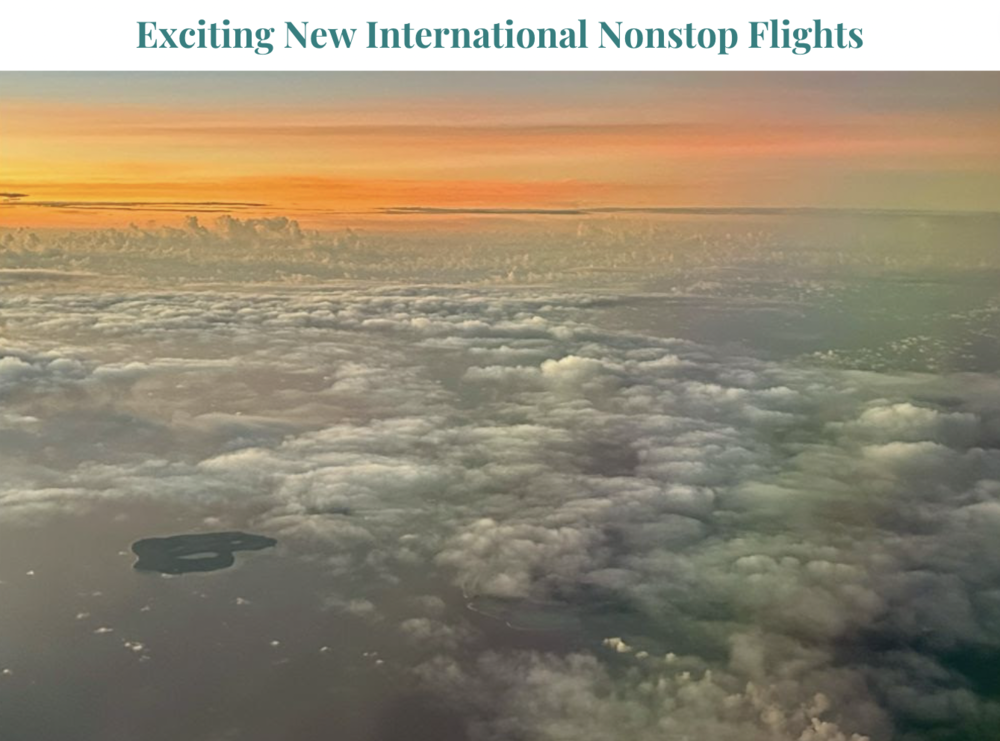Many of you have never taken a river cruise, are curious to try one, and write to me asking which you’d enjoy most. It’s tough for me to answer because river ships have many more similarities than differences. Some seem almost interchangeable in their architecture, itineraries, and daily routine. The biggest differentiating factor is usually the river itself—the scenery (castles? farms? vineyards? trains? autoroutes? industrial stretches?), the amount of boat and barge traffic, and the shape of the river (its width, and the number of twists and turns). Honestly, the biggest determinant of which cruise you’ll end up on is probably which ship has cabin availability for your travel dates and a price tag that suits.
Still, I want to help. So, as a public service, I will go out on a limb, reduce something that’s complicated to something simplistic, and try to single out the key differences among river cruise lines, based on five I’ve sailed on that cater to English-speaking travelers. (Note: I have not sailed on Tauck yet—and I hear great things about it.)
First, here are some of the features that these ships have in common. They all have:
* A top-floor outdoor observation deck, with chairs and a shaded area.
* A large, indoor, glass-walled observation lounge at the front of the ship.
* Three meals a day and group shore tours included in the price.
* Free coffee, cappuccinos, hot chocolate, and little snacks (usually cookies and fruit) available all the time in one of the lounges.
* Free but intermittent Wi-Fi.
* A buffet for breakfast; a buffet for lunch; and four-course (at least), two-hour dinners. Meals happen at set hours, and you cannot be late to dinner. You may end up dining with people you don’t know.
* Passengers from North America and sometimes other English-speaking countries.
* A cruise director to answer your questions about which excursions might suit you best and which stretches of the river not to miss.
* A group-tour approach to travel. Most river ships are run by tour companies and thus operate a river cruise like a group tour, only you’re moving by boat rather than by bus and you needn’t switch hotels every couple of days. Note to those of you who hate group tours: Nobody hates group tours more than I do. But I like river cruises because I love boats and I love gliding past all that scenery and history. I also love a room with an ever-changing view out my floor-to-ceiling window. So I use the ship as scenic, effortless sightseeing and transportation, and I explore the ports on my own.
So those are the similarities. Now for the differences. Keep in mind that each line has a variety of ships of different ages and sizes, and with somewhat different features; the summaries below tend to describe the newer ships in each fleet.
AmaWaterways
• You get a lot of living space—relatively speaking—and creature comforts. Many cabins have two “balconies”—an “outside balcony,” with a table and chairs, and a “French balcony” that’s floor-to-ceiling glass that opens. The cabins have a large flat-screen infotainment system that’s both TV and computer, with movies, music, and a bow cam.
• There are two dining rooms and a focus on regional cuisine.
•The service is attentive to travelers with special needs.
• There are bikes, perhaps a small outdoor heated pool, a beauty salon, and a massage therapist.
• Who I’d send on AmaWaterways: Foodies who need their creature comforts.
• Here’s more in-depth info from Cruise Critic.
Avalon Waterways

My cabin (#312) aboard Avalon Tapestry II on the Seine River in Normandy.
• The cabin window is wall-to-wall, floor-to-ceiling glass that stretches 11 feet wide and opens up 7 feet wide, thus basically turning your room into a veranda. It’s a smart design for river ships—and a good value for you because you’re not paying extra, or giving up precious floor space, for an outdoor table and chairs that you’re likely not going to use. (You’ve got an indoor table and chairs already.)
• The tour guides are better than most because the shore bus tours are run by Globus, the group-tour operator that owns Avalon Waterways and has been running tours for 85 years.
• There’s a second dining venue in the observation lounge; it offers a small-plate tasting menu.
• Who I’d send on Avalon: Travelers who choose four-star hotels, who don’t mind group bus tours, and for whom the most important aspect of a cruise is the scenery.
• Here’s more in-depth info from Cruise Critic.
Grand Circle Cruise Line
• There’s a pronounced emphasis on getting educated about the destination. Each cruise has three program directors who know the area and culture well and can answer all your questions in depth (which is a contrast to many ships, where the staff often can’t even name the river town you’re passing).
• These program directors serve as your local guides in each port. This is in stark contrast to other river cruise lines, most of whom subcontract their shore tours to a local tour company; in each port you get a different guide, and some can be a real snooze.
• Grand Circle tours tend to attract retired teachers and professors, so onboard you’ll find a lot of intellectuals and interesting conversationalists. Passengers are particularly friendly and extroverted too; there’s a real sense of camaraderie onboard.
• Cabins are small and closer to three-star than four-star and have two twin beds rather than one queen-sized bed.
• There are no bikes, pool, or beauty salon.
• Who I’d send on Grand Circle: Retirees who want to stretch their dollar as far as possible in order to take as many trips as possible, and who value education and well-traveled fellow travelers over luxury.
• Here’s more in-depth info from Cruise Critic.
Uniworld
• It’s like living in a floating palace. The ships are splendiferously decorated, with regal furnishings and plush fabrics. Cabins have amenities such as custom-made Savoir of London beds, heated floors and towel racks, and a selection of movies on the TV.
• There are bikes and sometimes a gorgeous heated indoor pool.
• The price includes all alcohol and gratuities, so you won’t be surprised by a big bill at the end of your cruise. (On the other hand, the all-inclusive price may mean you’re subsidizing other passengers’ bar bills.)
• Who I’d send on Uniworld: Travelers who choose five-star hotels and plan to spend a lot of time onboard the ship enjoying its luxuries, plush salons, and food extravaganzas.
• Here’s more in-depth info from Cruise Critic.
Viking Cruises

Our ship, docked in Budapest, November 2014
• There’s a range of cabin types to choose among—from small and tight to two-room suites. (Many river ships label their one-room cabins “suites”—which is confusing. Only Viking longships have honest-to-goodness suites comprised of two rooms.)
• The longships have less space per passenger than other cruise lines’ ships of the same size. (Viking puts 190 passengers on ships that are the same size as the ships that AmaWaterways, Avalon Waterways, and Uniworld put about 166 passengers on.)
• There’s an indoor/outdoor terrace where you can grab a quick dinner rather than having to sit through a two-hour meal every night. In nice weather, you can dine there al fresco.
• The ship has a concierge who can make private shoreside arrangements for you.
• There are no bikes, gym, spa, beauty salon, pool, or hot tub.
• Who I’d send on Viking: Independent travelers who want to focus on the destinations, prefer not to explore with a group on a bus, and don’t want to pay for shipboard amenities that they’re not going to use.
• Here’s more in-depth info from Cruise Critic.
Have you sailed on these five river cruise lines? If so, please weigh in below and let me know if your experience onboard was the same as or different than mine. (Include which river you sailed on and the year you sailed.) Thanks!





























